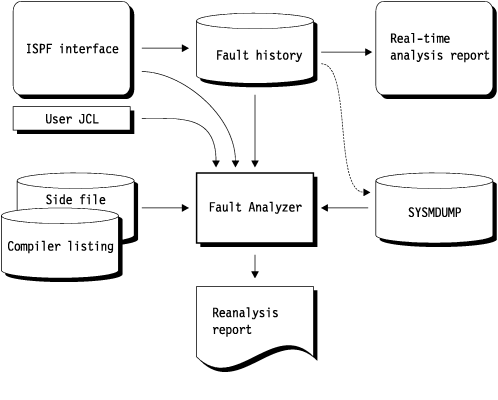Fault reanalysis
- Fault Analyzer obtains the required information from the saved minidump (or associated MVS dump data set) instead of the abending program's virtual storage.
- The history file is not updated.
- No summary is written to the SYSLOG.

If an MVS dump data set is associated with the fault entry, then the fault history entry holds the dump data set name in case it is required during reanalysis or user-selected display of storage locations that are not included in the minidump. If the dump data set is not available, then you can still perform reanalysis using the minidump which is included in the history file entry. If neither a minidump nor an associated MVS dump data set exists for a given fault, then you cannot initiate reanalysis, but you can still look at the real-time analysis report from the ISPF interface.
For the reanalysis, you can make a listing (or a side file) available, if one was not available when the real-time analysis was performed. Fault Analyzer is now able to provide the source statement information relevant to the abend.
Fault reanalysis can be performed in two different ways: batch or interactive. Both methods can be initiated using the Fault Analyzer ISPF interface.